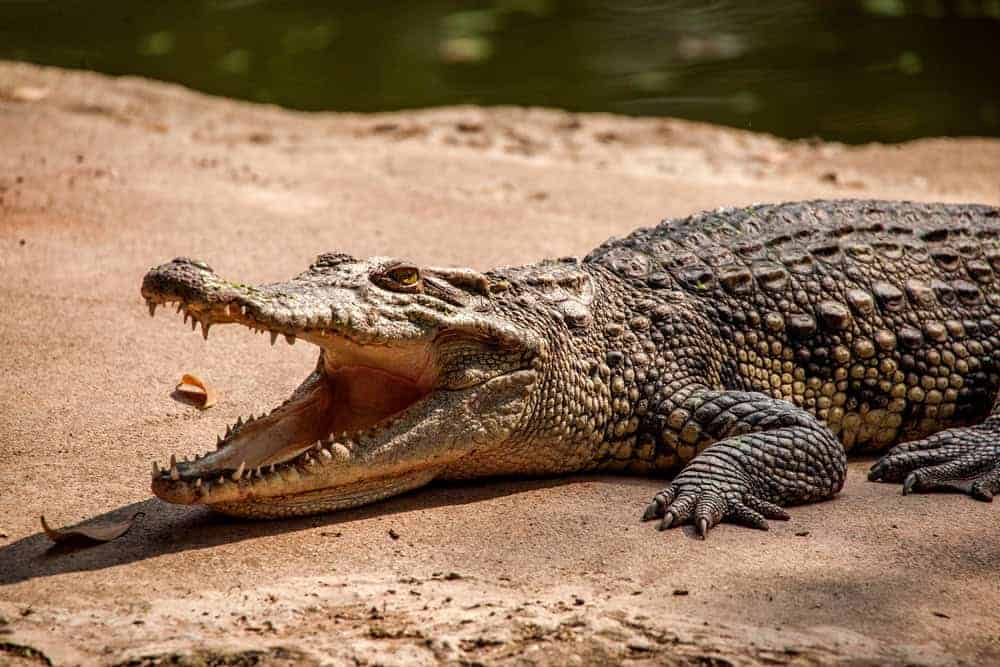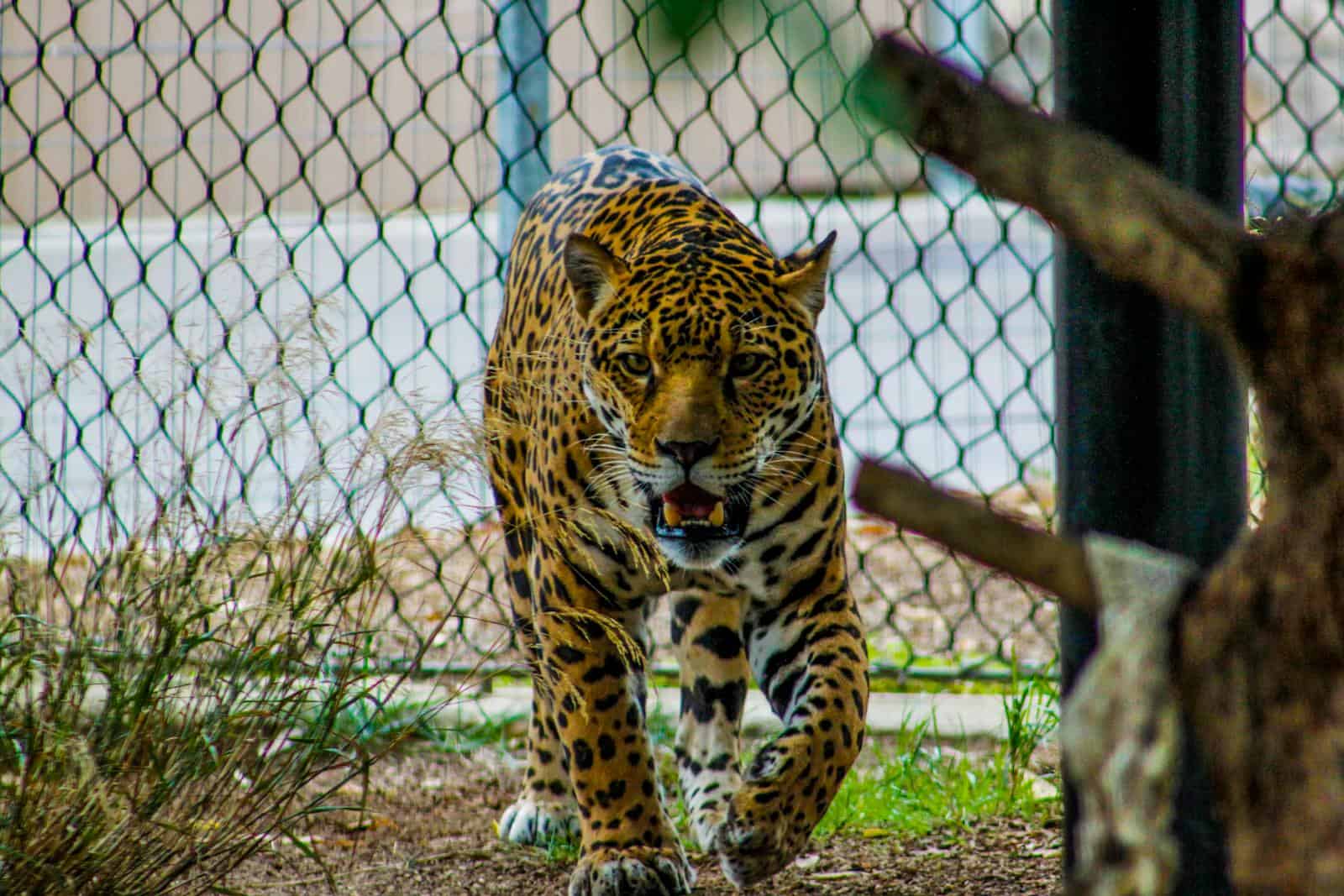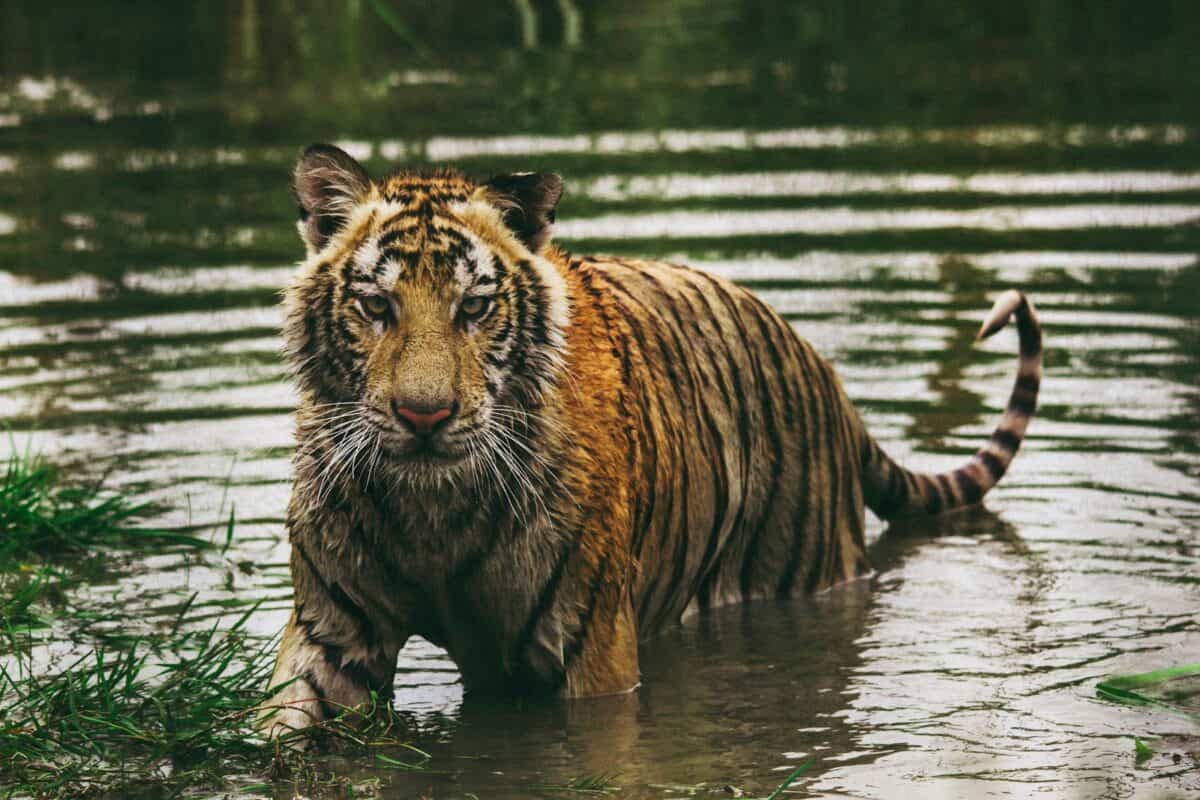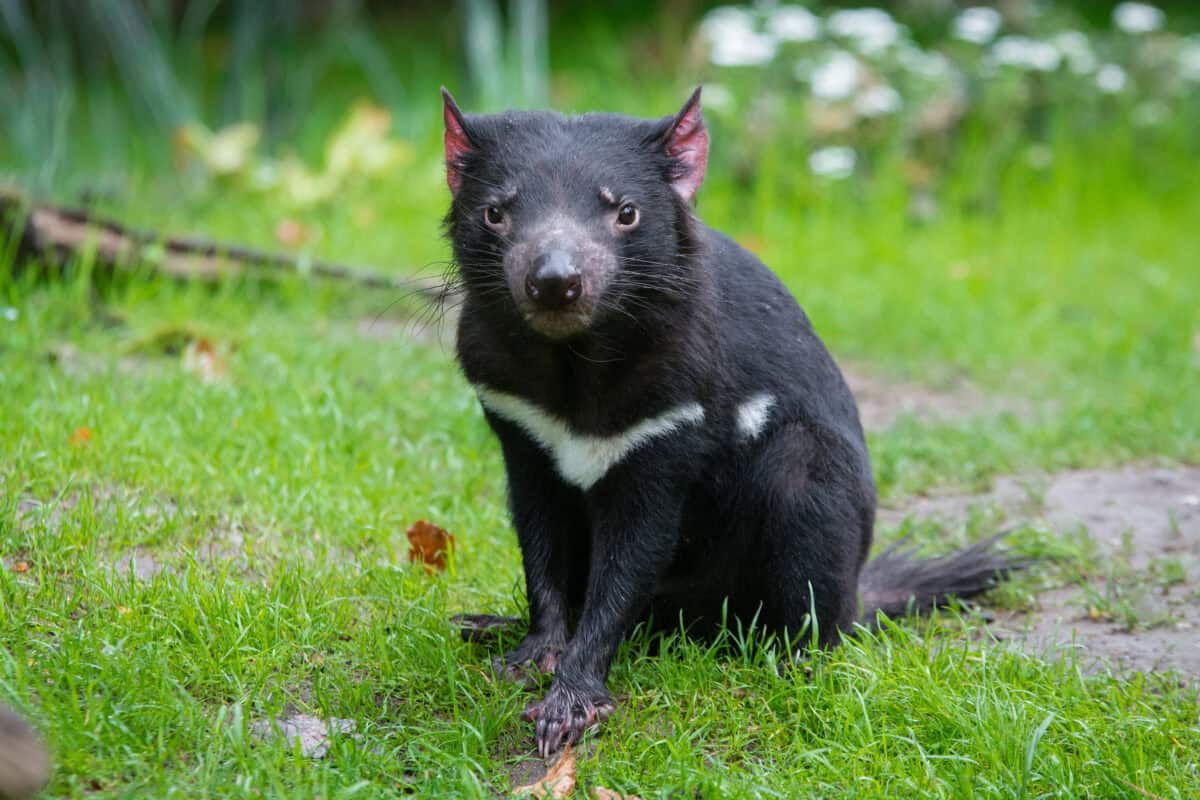When it comes to raw power in the animal kingdom, bite force is one of the most impressive demonstrations of strength. From land-dwelling predators to ocean hunters, nature has equipped various species with jaw mechanisms capable of delivering astonishing pressure. This article explores the 13 animals with the most formidable bites in the world, measured in pounds per square inch (PSI) or other appropriate metrics. These creatures have evolved these powerful bites for hunting, defense, and survival in their respective environments. Join us as we journey through this fascinating aspect of animal adaptation and discover which creatures possess truly jaw-dropping strength.
Saltwater Crocodile – The Undisputed Champion

Topping our list is the saltwater crocodile (Crocodylus porosus), with a bite force estimated at a staggering 3,700 PSI. These massive reptiles, which can grow to over 20 feet in length and weigh more than a ton, possess the strongest bite ever measured in any animal. Their incredible jaw strength allows them to crush turtle shells, snap through large mammal bones, and perform their infamous “death roll” to tear apart prey. Saltwater crocodiles have remained virtually unchanged for millions of years, a testament to their perfectly evolved hunting mechanisms. Despite their slow metabolisms, which mean they don’t need to feed often, when they do strike, their bite is virtually impossible to escape from and demonstrates why they remain apex predators in their environments across Australia, Southeast Asia, and the Indian subcontinent.
Nile Crocodile – Africa’s Power Biter

The Nile crocodile (Crocodylus niloticus) comes in second with a bite force of approximately 3,000 PSI. These African predators are responsible for more human fatalities annually than any other wild predator on the continent. Their powerful jaws are lined with 64-68 teeth designed for gripping and holding rather than chewing, as Nile crocodiles typically drown their prey before consuming it. This species has been revered and feared throughout human history, even being worshipped in ancient Egypt as the deity Sobek. Like their saltwater cousins, Nile crocodiles have specialized pressure receptors in their jaws that allow them to sense minute vibrations in water, guiding their precision attacks even in murky conditions. Their bite force is powerful enough to crack a buffalo’s spine in a single snap.
American Alligator – North America’s Jaw Champion

With a bite force of approximately 2,125 PSI, the American alligator (Alligator mississippiensis) ranks third on our list. Native to the southeastern United States, these reptiles possess remarkably powerful jaws adapted for crushing turtle shells, one of their favorite meals. American alligators can have up to 80 teeth in their mouths at one time, and they’ll go through 2,000-3,000 teeth in a lifetime as old teeth are continuously replaced. Unlike crocodiles, alligators have broader, U-shaped snouts that provide greater crushing power. Interestingly, despite their tremendous biting strength, the muscles that open an alligator’s jaws are relatively weak—so weak that a human can hold an alligator’s mouth closed with bare hands (though this is absolutely not recommended). This specialized adaptation focuses their muscular development on closing power rather than opening force.
Hippopotamus – Unexpected Grass-Eating Powerhouse

Despite being herbivores, hippopotamuses (Hippopotamus amphibius) possess one of the most formidable bites in the animal kingdom, measuring around 1,800 PSI. These semi-aquatic mammals use their massive canine tusks, which can grow up to 20 inches long, primarily for fighting and defense rather than feeding. Hippos are responsible for more human deaths in Africa than any other large animal, partly due to their aggressive territorial nature and surprising speed—they can run up to 30 mph despite weighing up to 4 tons. A hippo’s jaw can open to an impressive 150 degrees, creating a four-foot gape capable of bisecting a small boat or severely injuring predators that threaten them or their young. Their bite force is particularly remarkable considering they use it primarily on plant matter rather than for hunting prey.
Jaguar – The Bone Crusher

Among big cats, the jaguar (Panthera onca) reigns supreme in terms of bite force, delivering approximately 1,500 PSI. This South and Central American predator has evolved a unique killing style that relies on its exceptional jaw strength. Unlike other big cats that typically kill by suffocating their prey with a throat bite, jaguars often dispatch victims with a single bite to the skull, frequently between the ears, puncturing the brain. Their specialized skull morphology and powerful neck muscles support this lethal technique. Jaguars also have the strongest bite-to-body-size ratio of any big cat, allowing them to crush the armored shells of turtles and caimans, which form part of their diverse diet. Their impressive dental weaponry includes canines that can grow up to two inches long, perfectly designed for their bone-crushing hunting strategy.
Gorilla – Primate Bite Champion

The largest of the great apes, gorillas (Gorilla gorilla) possess a bite force of approximately 1,300 PSI. This tremendous jaw power comes primarily from their massive temporal muscles and robust jaw structure adapted for their herbivorous diet that includes tough fibrous plants, bark, and stems. Male silverback gorillas, in particular, have developed impressive canine teeth that are used primarily for display and defense rather than feeding. Despite their powerful bite, gorillas are generally peaceful creatures, using their strength only when threatened. Their dental structure reflects their diet—flat molars for grinding plant material and large canines for competitive displays. Interestingly, the bite force of a gorilla is significantly stronger than that of any human, whose bite force typically measures around 150-200 PSI. This disparity highlights the specialized dietary adaptations that have shaped gorilla physiology over millions of years of evolution.
Great White Shark – Oceanic Bite Master

The great white shark (Carcharodon carcharias) possesses a formidable bite force estimated between 669 and 1,350 PSI, though the exact measurement remains debated among scientists. What makes their bite particularly devastating is the combination of force with incredibly sharp, serrated teeth designed to slice through flesh and bone with ease. A great white can have up to 300 teeth arranged in several rows, and they continuously replace lost teeth throughout their lifetime—potentially going through 20,000+ teeth in their lifespan. Their biting technique involves chomping down on prey and then shaking their head side-to-side to saw through tissue, maximizing the cutting efficiency of their dental weaponry. The great white’s bite is further enhanced by its ability to project its jaw forward when attacking, essentially extending its reach and allowing it to grasp prey more effectively before the powerful bite is delivered.
Spotted Hyena – Bone-Crushing Specialist

The spotted hyena (Crocuta crocuta) might surprise many with its impressive bite force of approximately 1,100 PSI. Often misunderstood as mere scavengers, spotted hyenas are actually efficient hunters with jaws specifically evolved for crushing bones. Their premolar teeth, called carnassials, can exert tremendous pressure, allowing them to access nutritious bone marrow that other predators leave behind. This specialized feeding adaptation enables hyenas to extract maximum nutritional value from carcasses, processing parts that even lions cannot consume. Female spotted hyenas have stronger bites than males due to their larger size—one of the few mammalian species where females are dominant and physically larger than males. Their robust skull structure and powerful neck muscles support their incredible biting capacity, making them one of Africa’s most successful predators with a hunting success rate that often exceeds that of lions.
Polar Bear – Arctic Powerhouse

The polar bear (Ursus maritimus), the largest terrestrial carnivore, delivers a bite force estimated at around 1,200 PSI. These Arctic hunters have evolved specialized teeth and jaw muscles for their primarily carnivorous diet, unlike their more omnivorous bear relatives. Their canine teeth can grow to 1.5 inches long and are used to capture and kill seals, their primary prey. Polar bears have a narrow, elongated skull compared to other bears, an adaptation that increases the efficiency of their bite force for puncturing and gripping prey. Their powerful jaws allow them to quickly dispatch seals and easily crush through the thick blubber and tough hide of marine mammals. Additionally, their molars are more sharply cusped than those of brown bears, reflecting their more carnivorous diet and need to process meat efficiently in an environment where food can be scarce for extended periods.
Tiger – The Silent Stalker’s Bite

The tiger (Panthera tigris) possesses an impressive bite force of approximately 1,050 PSI. As the largest member of the cat family, tigers combine this powerful bite with incredibly strong neck muscles to take down prey animals that can be many times their weight, including adult gaur (wild cattle) that can weigh up to 2,200 pounds. Tigers typically kill by targeting the throat or nape of their prey, using their 3-inch canines to sever the spinal cord or suffocate the victim by crushing the windpipe. Unlike jaguars, which crush skulls, tigers use a combination of suffocation and blood loss to dispatch their prey. Their jaws are also wide-opening, capable of gaping at almost 180 degrees, allowing them to deliver their powerful bite to larger areas of a prey animal. This combination of bite force, tooth design, and killing technique makes tigers one of Asia’s most efficient and feared predators.
Grizzly Bear – North American Omnivore

The grizzly bear (Ursus arctos horribilis) delivers a powerful bite measuring approximately 975 PSI. This North American subspecies of brown bear utilizes its impressive jaw strength for a variety of feeding behaviors, from tearing apart logs to find insects to crushing bones to access nutritious marrow. Grizzlies have a specialized dental structure that reflects their omnivorous diet—long canines for killing prey and tearing meat, with flatter molars toward the back of the jaw for grinding plant material. Their bite is supported by massive jaw muscles and a sagittal crest on the skull that provides attachment points for these powerful muscles. A grizzly’s bite force is strong enough to crush a bowling ball, illustrating why few predators risk confronting them. Despite their fearsome reputation, grizzlies actually obtain about 80-90% of their nutrition from plant sources, using their powerful jaws as multi-purpose tools for their diverse dietary needs.
American Bull Mastiff – The Canine Contender

Representing domesticated animals on our list, the American Bull Mastiff dog breed exhibits an impressive bite force of approximately 550 PSI. While significantly less powerful than wild predators, this is still more than twice the bite force of an average human. These large, muscular dogs were originally bred for guarding and protection work, and their powerful jaws reflect this heritage. The mastiff’s head structure, with a broad skull and strong jaw muscles, contributes to their biting power. Despite this strength, well-trained mastiffs are known for having excellent bite inhibition—the ability to control the force of their bite—making them reliable companions despite their physical capabilities. Their bite force is channeled through 42 adult teeth, the standard number for adult dogs, which include specialized carnassial teeth designed for shearing meat. This impressive domesticated bite showcases how selective breeding can maintain or enhance certain natural traits even in companion animals.
Tasmanian Devil – Small Package, Powerful Punch

The Tasmanian devil (Sarcophilus harrisii) may be small compared to others on this list, but pound-for-pound, its bite is remarkable at approximately 200 PSI—impressive for a marsupial weighing only 15-26 pounds. These Australian carnivores possess the strongest bite relative to body size of any existing mammal. Their jaw structure allows them to open their mouths to an impressive 80-degree angle, and their teeth are designed to crush bone completely. Tasmanian devils are capable of consuming an entire carcass—including bones, fur, and all—leaving virtually nothing behind. This complete consumption is possible due to their specialized digestive system and powerful jaws. Their bite force serves them both as scavengers and predators, though they primarily feed on carrion in the wild. The strength of their bite is also important in their social interactions, as devils are known for their fierce communal feeding frenzies where dominant individuals assert themselves through powerful bites.
Conclusion: Understanding Nature’s Power Beyond the Numbers

The tremendous bite forces exhibited by these animals represent millions of years of evolutionary adaptation to specific ecological niches and survival challenges. What makes these bites truly remarkable isn’t just their raw power measured in PSI, but how they’re specialized for particular functions—from the bone-crushing capabilities of hyenas to the precision skull-piercing technique of jaguars. These adaptations showcase nature’s incredible ability to develop specialized tools for survival. The measurement of bite force itself is complex, influenced by factors like jaw structure, muscle attachment, tooth shape, and bite technique. Scientists continue to refine their understanding of these mechanics, sometimes leading to revised estimates of bite forces as measurement techniques improve. Beyond their scientific significance, these powerful biters remind us of nature’s awesome forces and the remarkable diversity of adaptations that allow different species to thrive in their environments. As we face increasing habitat loss and climate change, preserving these magnificent creatures and their unique adaptations becomes ever more important for maintaining the rich biodiversity of our planet.
- 14 Dog Breeds That Love to Cuddle - August 9, 2025
- 11 Signs Your Horse Might Be Bored - August 9, 2025
- Jurassic World Dominion Dinosaurs - August 9, 2025

